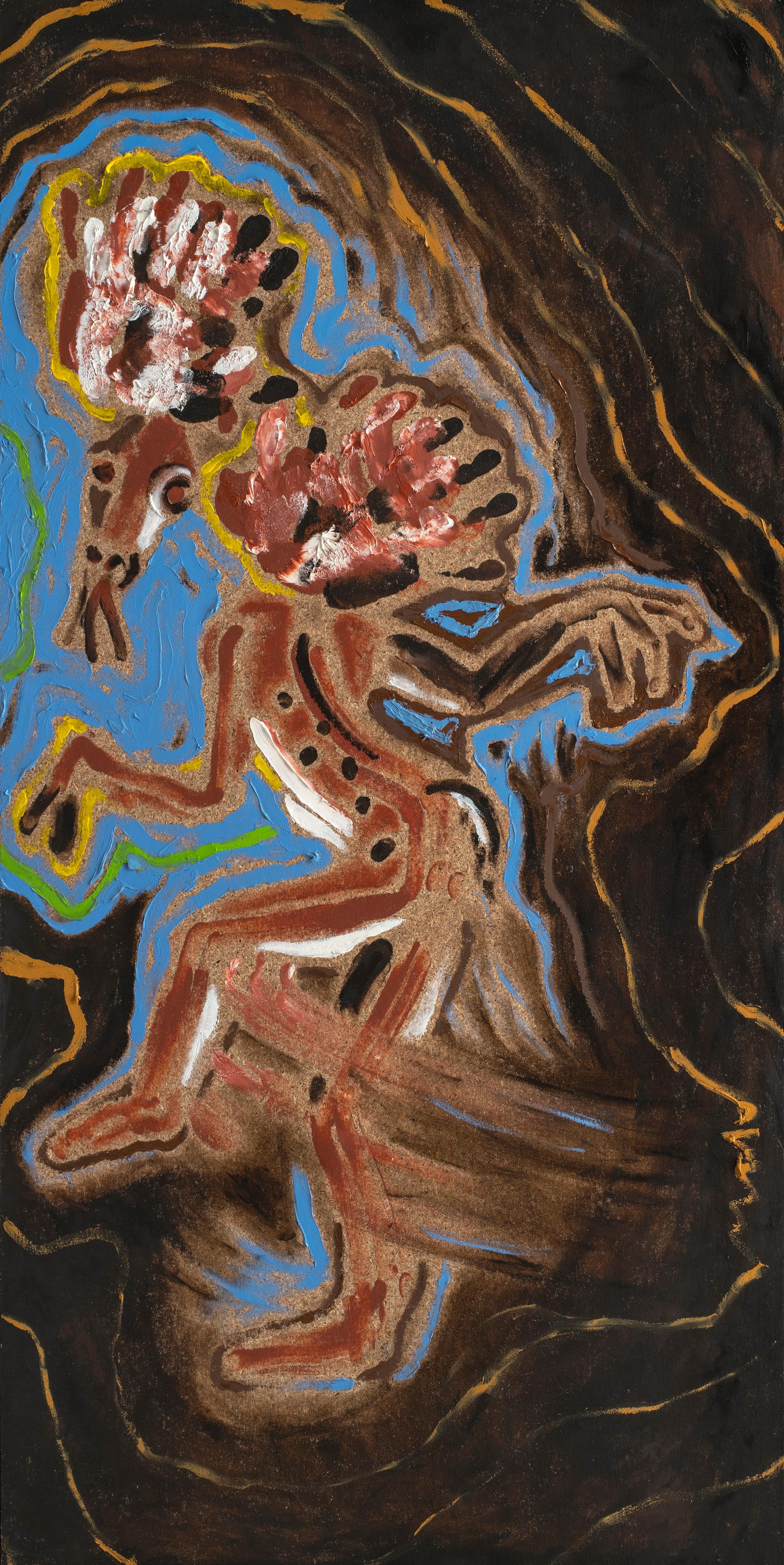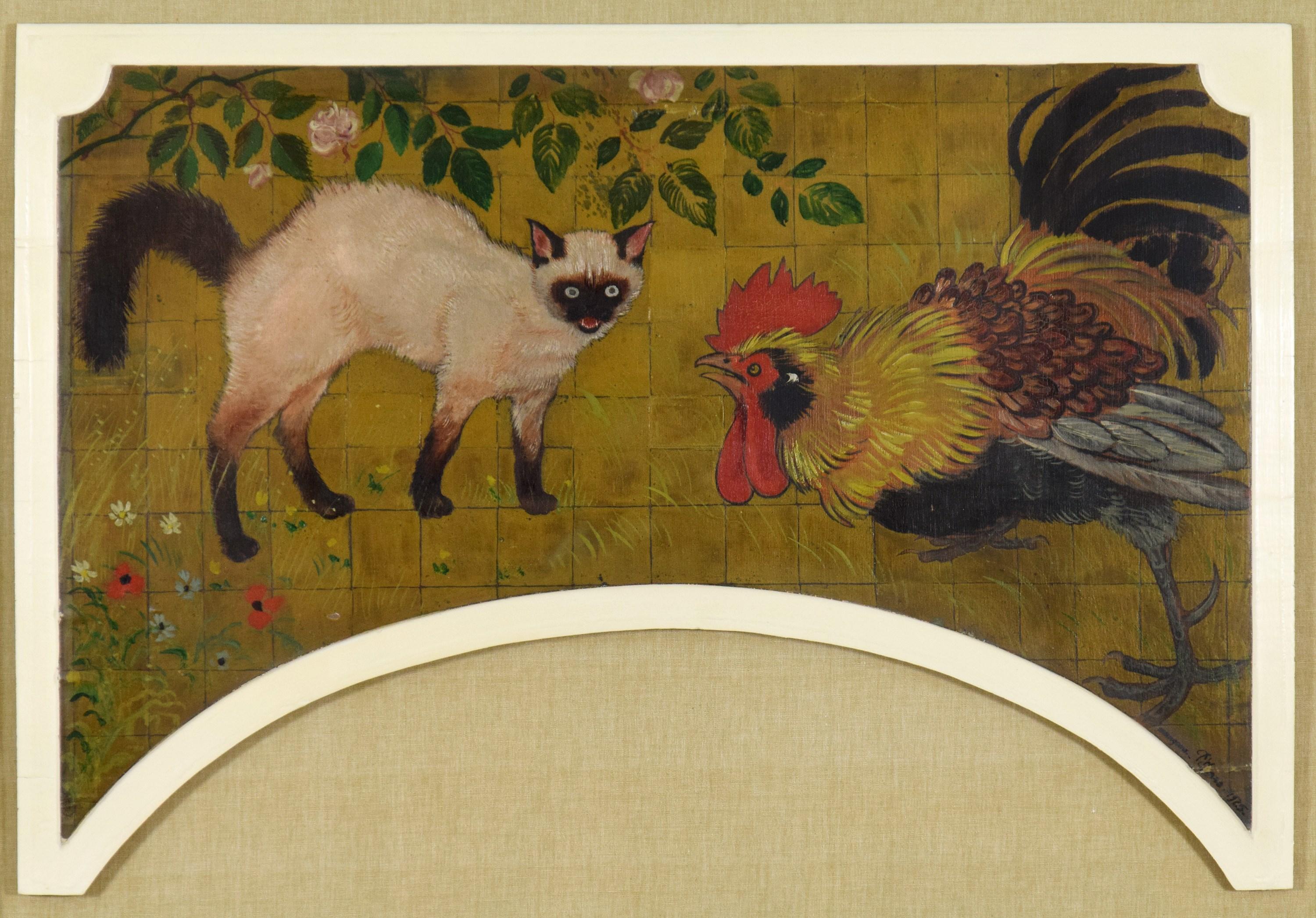Items Similar to A Lion and a Lioness in a Landscape
Want more images or videos?
Request additional images or videos from the seller
1 of 5
William HugginsA Lion and a Lioness in a Landscape1847
1847
About the Item
William Huggins (1820 - 1884)
A lion and a lioness in a landscape
Oil on panel
Signed and dated, lower right: 'Huggins 1847'
With gallery and exhibition labels, verso
Provenance:
Private collection, USA
Lot Essay:
William Huggins was born in Liverpool in 1820. Huggins shared many characteristics with George Stubbs, revealing a precocious talent for drawing and painting. Aged only 15, he won a prize at the Liverpool Mechanics Institute, where he studied before entering the Liverpool Academies School, with Richard Ansdell, in 1835. Huggins spent much time at the zoological Gardens in Liverpool, studying the animals, as well as following Wombwell's Menagerie from place to place. It wasn't until 1850, however, the he was to become a full member of the Liverpool Academy.
Like Stubbs, who, much to his own annoyance, was never able to rid himself of the label 'horse painter', Huggins was unable to escape from the description of 'animal painter', despite his evident dislike of the term. In the first half of the 19th century, as in the 18th century, the hierarchy of painting was comparatively rigid, and being an animal painter did not carry as much weight as being either a portrait or a landscape painter. However, in Liverpool, there was only a limited market for history painting during that period, and, as elsewhere in the provinces, portraits, landscapes, and animal paintings were popular instead.
Ben Marshall (1768 - 1835), a Leicestershire painter, once said, "I discover many a man who would pay me 50 guineas for painting his horse, who thinks 10 guineas is too much for painting his wife."
Huggins' technique is very particular to him, as he employed a very distinctive glazing of colours on his prepared boards and canvases. Typically, he used a white millboard as the ground for his transparent glazes. His knowledge of animal anatomy was profound. E. Rimbault Dibdin, in his article on Liverpool-born animal painters (Art Journal, 1904), praised Huggins as a master; "Both as an executant in paint, and as a consummate expert in knowledge of animal form and character, Huggins was qualified to out-distance both Landseer and Ansdell." It was only his shy and slightly eccentric character that stopped Huggins from doing so.
Dimensions:
(Panel) 15.75 in. (H) x 19 in. (W)
(Frame) 19.5 in. (H) x 23.25 in. (W)
- Creator:William Huggins (1820 - 1884, British)
- Creation Year:1847
- Dimensions:Height: 19.5 in (49.53 cm)Width: 23.25 in (59.06 cm)
- Medium:
- Period:
- Condition:Condition report available upon request.
- Gallery Location:London, GB
- Reference Number:1stDibs: LU673314327702
About the Seller
5.0
Vetted Seller
These experienced sellers undergo a comprehensive evaluation by our team of in-house experts.
Established in 1990
1stDibs seller since 2017
40 sales on 1stDibs
Typical response time: 2 hours
- ShippingRetrieving quote...Ships From: London, United Kingdom
- Return PolicyA return for this item may be initiated within 1 day of delivery.
More From This SellerView All
- Two Pumas in a LandscapeBy William HugginsLocated in London, GBWilliam Huggins (1820 - 1884) Two pumas in a landscape Oil on panel Signed and dated, 'W. Huggins 1840' Exhibition and gallery labels, verso Provenance: Ex-Collection, the Master of...Category
Mid-19th Century Paintings
MaterialsOil, Panel
- 18th Oil Painting Horses Feeding at the StablesBy James SeymourLocated in London, GBJames Seymour (1702–1752) Feeding Time in the Stables Oil on canvas 32 x 38 inches inc. frame Provenance: Private Collection, Lambourn James Seymour (1702–1752) was an English painter, widely recognized for his equestrian art. Seymour was born in London. His father was an amateur artist and art dealer, whose other business dealings (as a banker, goldsmith, and diamond merchant) afforded young Seymour the leisure time to study art on his own, either his father's or the art at the Virtuosi Club of St. Luke - a gentleman's club his father belonged to, specializing in art. In a short time the boy was a self-taught artist, familiar with many of the prominent artists of the period. Seymour's love of art was matched only by his love of horses. He began spending time at racetracks early on, and before long found himself absorbed in the sport - drawing, painting, owning, breeding, and racing horses. His art proved popular among the prominent sporting families of the day, eventually garnering Seymour patrons in Sir William Jolliffe and Charles Seymour, 6th Duke of Somerset...Category
18th Century Old Masters Animal Paintings
MaterialsOil
- Enormous 19th Century British Sporting Horses & Hounds Hunting Oil PaintingBy Charles Augustus Henry LutyensLocated in London, GBCharles Augustus Henry LUTYENS (1829 – 1915, British) On the Scent c.1880 Unframed 50 x 84 inches Framed 64 x 98 inches Oil on Canvas Signed Provenance: Possibly commissioned by George William Coventry, 9th Earl of Coventry (1838-1930); thence by family descent; Croome Court House Sale, Worcestershire 1948 Lord Coventry was a keen huntsman having founded the North Cotswold Hunt in 1867 and in 1882 The Croome. Besides founding two Hunts, he also held the unique distinction of owning racehorses that won two Grand Nationals in consecutive years. Daphne Moore, the hunting correspondent writing about the Croome Hounds c.1950, emphasised the influence of Rambler as a perfect type of hound. ‘Who could have dreamed that in 1949 well-bred hounds in almost every kennel in England would have at least a trace of Rambler’s blood in their veins?’ … to the hound man The Croome and the name Coventry immediately recalls Rambler. Anyone who has seen his portrait by Lutyens, will remember him as being the perfect type of hound for any country…’ Charles Lutyens the artist spent his early adult life in the Army, joining the 20th foot and siled with them in 1850 to serve in Canada. In 1857 he left the army to take up life as a professional artist. He based himself at Onslow Square...Category
1880s Victorian Animal Paintings
MaterialsOil
- Pair of Farmyard Scenes by J.F. Herring JrBy John Frederick Herring JrLocated in London, GBJohn Fredrick Herring Jr Pair of Farmyard Scenes Signed and Dated Oil on Canvas 56 X 56 cm John Fredrick Herring Jr was born in Doncaster South Yorkshire around 1820. He was the son of John Fredrick Herring Sr, one of Britain's best equestrian painters of the first half of the 19th century. Herring Jr through his fathers influence was exposed to many wealthy patrons and also the intimacy of his fathers brush work. Herring's farmyard style that is depicted in the paintings above is iconic and most desirable to any collector of 19th century English sporting art.Category
19th Century Animal Paintings
MaterialsOil
- A Pair of 18th Century Spaniels and Pointers HuntingBy Ramsay Richard ReinagleLocated in London, GBRamsay Richard Reinagle, RA (British, 1775 – 1862) Spaniel and Pointers, a Pair Circa 1790 Oil on Panel 19 3/4 X 23 1/4 inches, Framed Provenance: Captain Gilbey and by decent Son...Category
Late 18th Century Animal Paintings
MaterialsOil
- Early 18th Century Painting of a BearLocated in London, GBJOHANN MELCHIOR ROOS (Heidelberg 1659 - 1731 Braunschweig) A Brown Bear in a Landscape Oil on Canvas Signed and Dated: "Roos Fecit/ 1719" 18 1/8 ...Category
1710s Animal Paintings
MaterialsOil
You May Also Like
- Eclipse Nicolas Kennett 21st Century British painting animal blue wild mysteryLocated in Paris, FROil paint on wood panel Signed on the back "Incanto" or the enchantment of shifting "Nicolas Kennett revisits the organic world through painted and s...Category
2010s Contemporary Figurative Paintings
MaterialsWood Panel, Oil
- Silence Nicolas Kennett 21st Century art Contemporary painting shamanism animalLocated in Paris, FROil paint on panel Unique Signed on the backCategory
2010s Contemporary Figurative Paintings
MaterialsWood Panel, Oil
- Bretonne à la Vache by Georges Manzana Pissarro - Oil on panelBy Georges Henri Manzana PissarroLocated in London, GBBretonne à la Vache by Georges Manzana Pissarro (1871-1961) Oil on panel 54 x 65 (21 ¹/₄ x 25 ⁵/₈ inches) Signed and dated lower left, Manzana 1929 Pissarro Inscribed lower left, Pon...Category
1920s Post-Impressionist Animal Paintings
MaterialsPanel, Oil
- Cat and Cockerel, Oil and Gold on Panel by Georges Manzana Pissarro, 1925By Georges Manzana PissarroLocated in London, GB*UK BUYERS WILL PAY AN ADDITIONAL 20% VAT ON TOP OF THE ABOVE PRICE Cat and Cockerel by Georges Manzana Pissarro (1871 - 1961) Oil and gold on panel 65 x 94 cm (25 ⁵/₈ x 37 inches) ...Category
1920s Art Deco Animal Paintings
MaterialsGold
- Cou Cou nu et ses poules by Georges Manzana Pissarro - Animal paintingBy Georges Henri Manzana PissarroLocated in London, GBCou Cou nu et ses poules by Georges Manzana Pissarro (1871-1961) Oil on panel 62 x 65 cm (24 ³/₈ x 25 ⁵/₈ inches) Signed and dated lower left, Manzana 1935 Pr...Category
1930s Post-Impressionist Animal Paintings
MaterialsPanel, Oil
- Field Nicolas Kennett 21st Century British painting landscape animal bird crowLocated in Paris, FROil paint on wood panel Signed on the backCategory
2010s Contemporary Animal Paintings
MaterialsWood Panel, Oil
Recently Viewed
View AllMore Ways To Browse
A William Brown
Antique Knowledge
Framed Lions
Antique Market Place
Antique Animal Paintings
Paintings Of Lions
Brown And White Antique Paintings
Antique Journal
Art Shy
Man And Horse Painting
Man And Lion
Lion Paintings
Lion Oil
Lion On Canvas
1835 Portrait
Oil Painting Of Lion
Oil Painting Of A Lion
Portrait 19h Century Portrait





